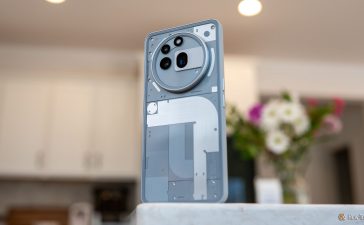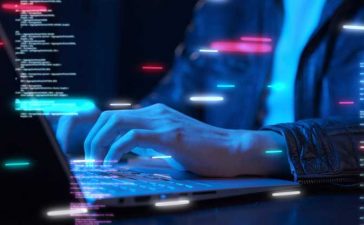Clean Energy Charging is not a conspiracy to reduce the speed or efficiency of charging when you plug in your iPhone. It is a harbinger of how most future electronics will consume power.
What is Clean Energy Charging?
Announced with iOS 16 and introduced in the US last fall, Clean Energy Charging selectively charges your device when lower carbon-emission electricity is available. In some regions, this might be during the daytime when solar and renewable energy production peak, but in most cases, it will be at night.
To support the feature, your iPhone gets a forecast of carbon emissions on your local energy grid. It then charges the device when the cleanest energy is available.
The effect is to reduce demand at peak times, and to increase use of renewable energy at those times when it is available, or demand is low. It matters because 22% of Apple’s gross carbon footprint is generated from device charging.
What happens with Clean Energy Charging?
When your iPhone is connected to power, it will recharge. If enabled, Clean Energy Charging may suspend charging until the cleanest energy is available. When it does, it will share a Lock Screen Notification that lets you know what’s happening and when to expect your device to be fully charged.
If you want to fill it with energy more swiftly, just touch and hold that notification and tap Charge Now when it appears. You can also switch the feature off, but at least some of the time an iPhone user may choose to take Clean Energy Charging’s advice, which means using lower carbon-emission energy.
It makes for a conscious choice around how you as a consumer want to act.
This is how Clean Energy Charging works
This is how it works:
- Clean Energy Charging is only available in the US where it is enabled by default on your iPhone after updating to iOS 16.1.
- You can turn it off in Settings>Battery>Battery Health & Charging where you’ll find a toggle for Clean Energy Charging.
- The feature works best with Optimized Battery Charging, as this learns your charging habits to the extent that the cleaner energy component only activates at times and places during which you usually charge your iPhone. For example, if you usually charge your device overnight, the actual charge will take place at the optimal time for clean energy.
- As well as switching on Clean Energy Charging, you also need to enable three specific Privacy & Security settings on your device: Location Services and System Services>System Customization along with System Services>Significant Locations.
- You can also override the feature, or switch it off entirely using the Clean Energy Charging toggle in Battery Health (above).
Clean Energy Charging does not take over your device. It inherently gives you choice; the difference is that your choice is informed.
- Want to charge immediately? You can.
- Happy to wait for a greener choice? That’s an option.
- Want to benefit the world with an informed choice? Do so.
Clean Energy Charging is smart enough to see when you are in a new location, travelling, or if the times at which you charge your device are variable. If it detects any of those, it will turn itself off.
Why do we need to manage our energy?
The latest Intergovernmental Panel on Climate Change (IPCC) report notes that global emissions continue to rise at unprecedented levels, but climate change is not the only reason to manage energy better.
If you’ve checked your energy bill in recent months, you’ll know that prices are increasing. In some nations these increases are causing significant pain with households needing to choose between heating and eating. Along with soaring costs, nations globally are attempting to shift away from energy production based on coal, gas, or oil to embrace carbon-neutral power production, broadly including wind and solar energy, sometimes supplemented by nuclear power.
In part, this shift is to reduce carbon emissions, in part it’s a response to the increasing cost of fossil fuels as available stocks decline, and, of course, within the context of war in Ukraine, it helps nations exposed to national energy supply problems because of failing relationships with coal, oil, or gas suppliers.
There appear to be vested interests opposing such changes, but energy independence is a critical strategic aim to secure future supply.
However as the number of electronic devices continues to grow and the extent of energy consumption increases we will need more energy, which is why in most nations additional renewable energy sources are being deployed.
There are other considerations. Take air conditioning and data centers, for example. Global demand for energy to drive cooling systems is expected to triple by 2050. Demand is driven by increasing global temperature and economic development. This is supplemented by the need to cool the data centers we rely on. The EU Commission in 2020 estimated data centers would account for 3.2% of total European energy demand by 2030, but it will not stop there. Globally, as emerging economies digitize and emerging economies grow, that demand will accelerate.
In essence, rising costs, increasing demand, and the need to meet climate change targets mean we should make more efficient use of the energy we’ve got while engaging in rapid deployment of carbon-neutral power production. Considerations like national security, energy infrastructure, making energy affordable, increasing demand are all among the important reasons energy security depends on better decisions.
About those better decisions
One component to Apple’s approach is to create electronic devices that need less energy to work. Apple understands that with more than a billion devices in use today, each watt of energy consumption shifted to carbon neutral energy supply makes a difference. The company is already carbon neutral across its corporate business and wants to reach the same goal across both manufacturing and the product lifecycle.
Evidenced in the “Green Slide” Apple shares at every product launch, this is part of the company mission to become carbon neutral by 2030. Apple shares this work in its annual environmental report. Apple Vice President Lisa Jackson recently said the next report will appear mid-April. “There will be some good news there,” she said. Clean Energy Charging is part of its attempt to reduce energy consumption.
Inherently, the feature is about behavior modification — in this case, an attempt to give increasingly environmentally aware consumers the chance to take informed choices about what they do.
See it as similar to how the Activity app on an Apple Watch helps motivate people to stay active for better personal health. Just as Activity does that, Clean Energy Charging should help push some users toward cleaner energy.
Clean Energy Charging is the future
Speaking to Washington Post, Mary Ann Piette, a senior scientist at Lawrence Berkeley National Laboratory working on ways to better manage and reduce energy consumption, said: “We’re moving to a time when devices will listen to grid signals every hour of the year and become intelligent enough to shift their load to the cleanest and the cheapest times,” said Piette. “That is the future.”
Clean Energy Charging is one idea in what will become a forest of new approaches to help optimize energy consumption while taking better choices around supply.
Apple is not alone in working to make its business/devices smart, not just in terms of how much energy they use, but also when they use it. LG refrigerators can already optimize energy consumption. Infosys recently claimed 73% of global companies see energy transition as being one of their top three organizational priorities.
Apple may be a first mover, but it’s worth noting that if all 118 million iPhone users in the US use the feature, it will have the same positive effect on carbon emissions as taking 85,000 cars off the road, according to EPA data cited here.
It’s your choice. But I suggest you leave Clean Energy Charging turned on. You can always override it when you’re in a bit of a hurry.
Please follow me on Mastodon, or join me in the AppleHolic’s bar & grill and Apple Discussions groups on MeWe.
Copyright © 2023 IDG Communications, Inc.











